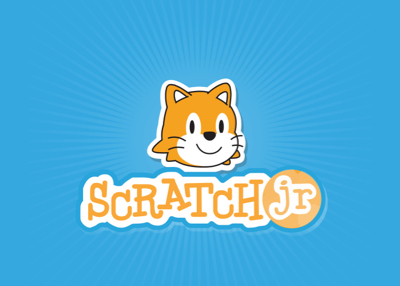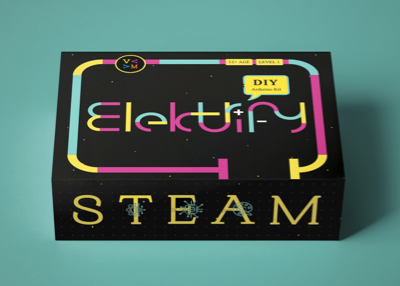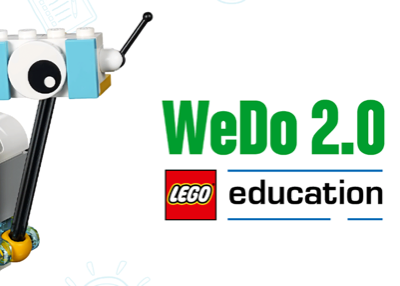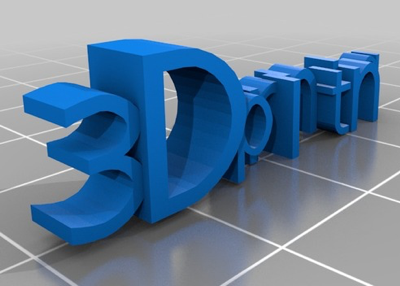Courses for Grades 1 to 5
We provide a wide variety of In-person and Live Online Classes for children in Grades 1 to 5. Browse through our course details to know more. Our teachers are BTech / MTech Engineers who have a rich experience of teaching kids both in-person and online. Book a Free Trial Class for your child and help them understand logic, skill, maths and creativity.

SCRATCH JR.
Coding is now a new tool for being literate and with Scratch Jr, kids as young as 5 years can also learn to code. In this process, even young kids can solve problems, create programs and unleash their creativity and curiosity. Children also use math and language in a systematic and creative way using the power of logic and skill. This is especially recommended for kids 5-7 years of age.

PAPER CIRCUITS
Children will learn how to make simple or complex electrical circuits on a flat piece of paper! Paper circuits are low voltage electronic circuits that are created on paper templates to provide a fun learning experience to kids. Children can also learn on the DIY ELEKTRIFY Paper Circuit Kit that has projects made using conductive copper tapes, LEDs and a power source such as a coin cell battery.

SCRATCH
Let’s teach kids to Code! With the ever-changing technology, the ability to be able to code is a given reality. Scratch teaches young children important strategies for solving problems, communicating, solving, designing and communicating projects as well as ideas.
This is the first step to coding. Here children will learn sequences, commands, blocks, algorithms, loops, functions, events, sprites, make interactive games, learn to use music/sound/text in coding. Children will create interactive games and animations and can even share them with friends and family members. This language has been developed by Lifelong Kindergarten Group at MIT Media Lab.

Code.org
Code.org enables students aged 5 and above to learn computer science at their own pace through interactive sessions. We believe that computer science and computer programming should be part of the core curriculum in education, alongside other science, technology, engineering, and mathematics (STEM) courses.

LEGO WEDO
LEGO Education WeDo 2.0 is a hands-on, elementary science solution that develops science practices through a robot-based learning system. As children collaborate, they deeply engage with science, engineering, technology, and coding, sparking a love for experimentation and investigation. With WeDo 2.0, students will explore, create, and share their scientific discoveries as they build, program, and modify projects. Our course comes fully equipped with a WEDO kit for online and offline classes.

HTML
Programming is the new math. Hypertext Markup Language (HTML) is the standard markup language for documents designed to be displayed in a web browser. It can be assisted by scripting languages such as JAVASCRIPT. In this course, students learn the basics of HTML to be able to build real-world websites. Programming is the new math. Hypertext Markup Language (HTML) is the standard markup language for documents designed to be displayed in a web browser. It can be assisted by scripting languages such as JAVASCRIPT. In this course, students learn the basics of HTML to be able to build real-world websites.

App Development
MIT APP Inventor / Thunkable is intuitive visual-based programming that allows adults and children alike to create and run fully functional apps for their devices such as smartphones and tablets. Students learn sequences, commands, blocks, algorithms, variables, loops, events and use artificial intelligence. They also use the MIT Apps tool to create android based apps and Thunkable for IOS apps while having fun doing it.

3D DESIGNING & PRINTING
Children become creative and learn designing skills by creating objects in 3D, using Sketchup. They will design and create their own objects in 3D and spark their imagination.
3D printing technology has many benefits and is being used in many industries including automotive, food, education, construction and many more. The many benefits of 3D printing technology include:
- Customization as per the choice of the person.
- No wastage as all products are made layer by layer and since no material is removed or deleted or thrown away. There is no wastage of raw material.
- Prototyping is faster as 3D printing can create a single or a small batch of products for testing purposes. This lowers the costs considerably.

Lego EV3
LEGO MINDSTORMS Education EV3 will enable children to understand forces and motion; graph and interpret rotation sensor data; develop robots capable of complex thinking using logical structures and sensor feedback; understand those complex systems are created from subsystems; and design, build and program a fully-functioning robotic system.
Each session will comprise a new model and new concepts. Challenges that include task-based models will be done by students such as line following, crossing hurdles, maze finding building robot arms and many more. Models will also utilize the application of sensors such as touch, ultrasonic, light, colour and many more. Students will learn an introduction to mechanical components such as gears, axles, pulleys and understand robot design while constructing the robots models themselves.
They will use the LEGO EV3 software and code through visual blocs, concepts such as pivot and axle turns. They will also be doing the application of sensors such as touch, ultrasonic light, & colour to make their robots perform various tasks. Each day they will be making a new robot and programming the robot in a fun and challenging way.